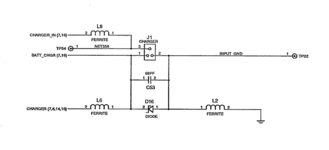Hi
This is my first post here, but I need some ideas to help me troubleshoot a PowerBook 145 I acquired.
When I got it it was completely dead. After some youtube searching, I found that the diode in the power input was toast, and after replacing it with a 1N4004, the machine started Booting with the boot sound, but then immediately shuts down again. Screen briefly showing patterns.
I then replaced all the LCD caps, and the screen got much better during boot - even got to see the mouse - but still it shuts down.
Then I started to take away the hard drive, floppy and screen to see if any of those are pulling the power down. The board then seems to run steady at 7.5V, 0,5A.
Adding the screen also has the board running steady, and now with the missing boot disk symbol. Current here is around 0.9A.
Then I added the HD, which makes it shut down during boot. Current briefly peaking around 1.5A, Then instead I added the floppy drive, which uses less power, and it starts booting from the floppy, currency in the range of 1.2A. Gets to draw the menu bar, and then it shuts down.
So I suspect that something in the power management decides to shut down the machine when current gets above around 1.2-1.3A. Any ideas where to find the reason for this?
And... anyone has a link to the schematics of this or similar machines?
And finally, I am going to try to replace the lithium battery. Will a 2330 work?
Thanks
Frank C
This is my first post here, but I need some ideas to help me troubleshoot a PowerBook 145 I acquired.
When I got it it was completely dead. After some youtube searching, I found that the diode in the power input was toast, and after replacing it with a 1N4004, the machine started Booting with the boot sound, but then immediately shuts down again. Screen briefly showing patterns.
I then replaced all the LCD caps, and the screen got much better during boot - even got to see the mouse - but still it shuts down.
Then I started to take away the hard drive, floppy and screen to see if any of those are pulling the power down. The board then seems to run steady at 7.5V, 0,5A.
Adding the screen also has the board running steady, and now with the missing boot disk symbol. Current here is around 0.9A.
Then I added the HD, which makes it shut down during boot. Current briefly peaking around 1.5A, Then instead I added the floppy drive, which uses less power, and it starts booting from the floppy, currency in the range of 1.2A. Gets to draw the menu bar, and then it shuts down.
So I suspect that something in the power management decides to shut down the machine when current gets above around 1.2-1.3A. Any ideas where to find the reason for this?
And... anyone has a link to the schematics of this or similar machines?
And finally, I am going to try to replace the lithium battery. Will a 2330 work?
Thanks
Frank C

